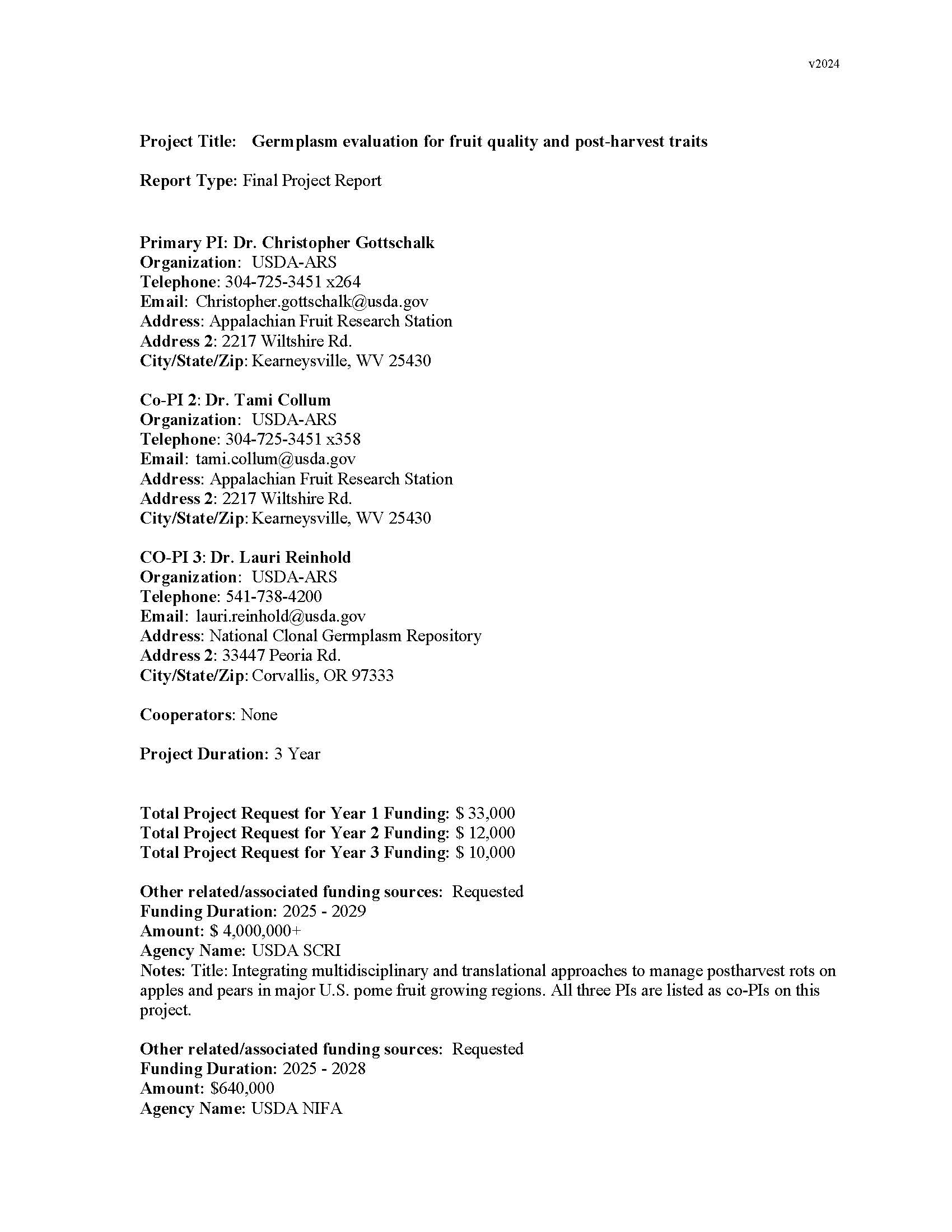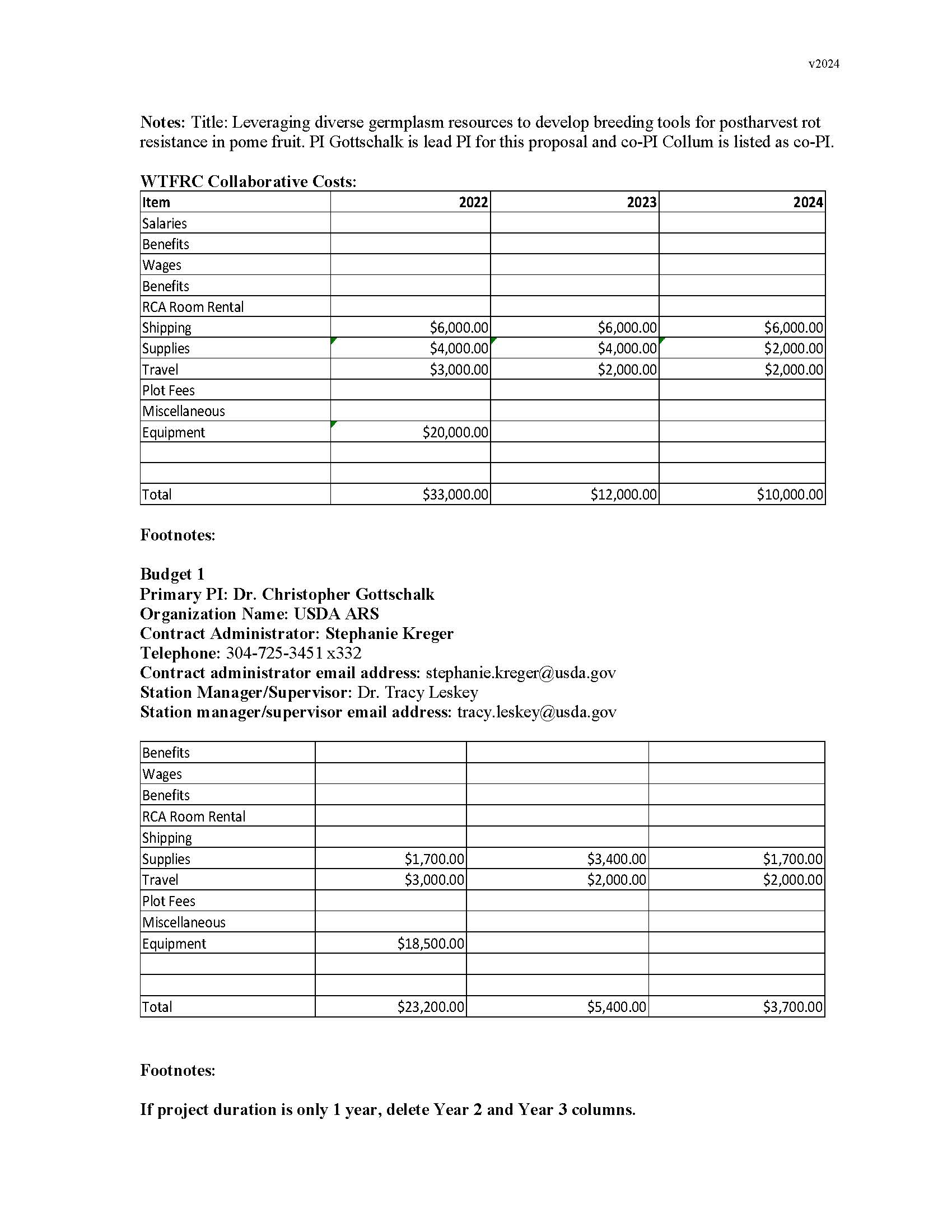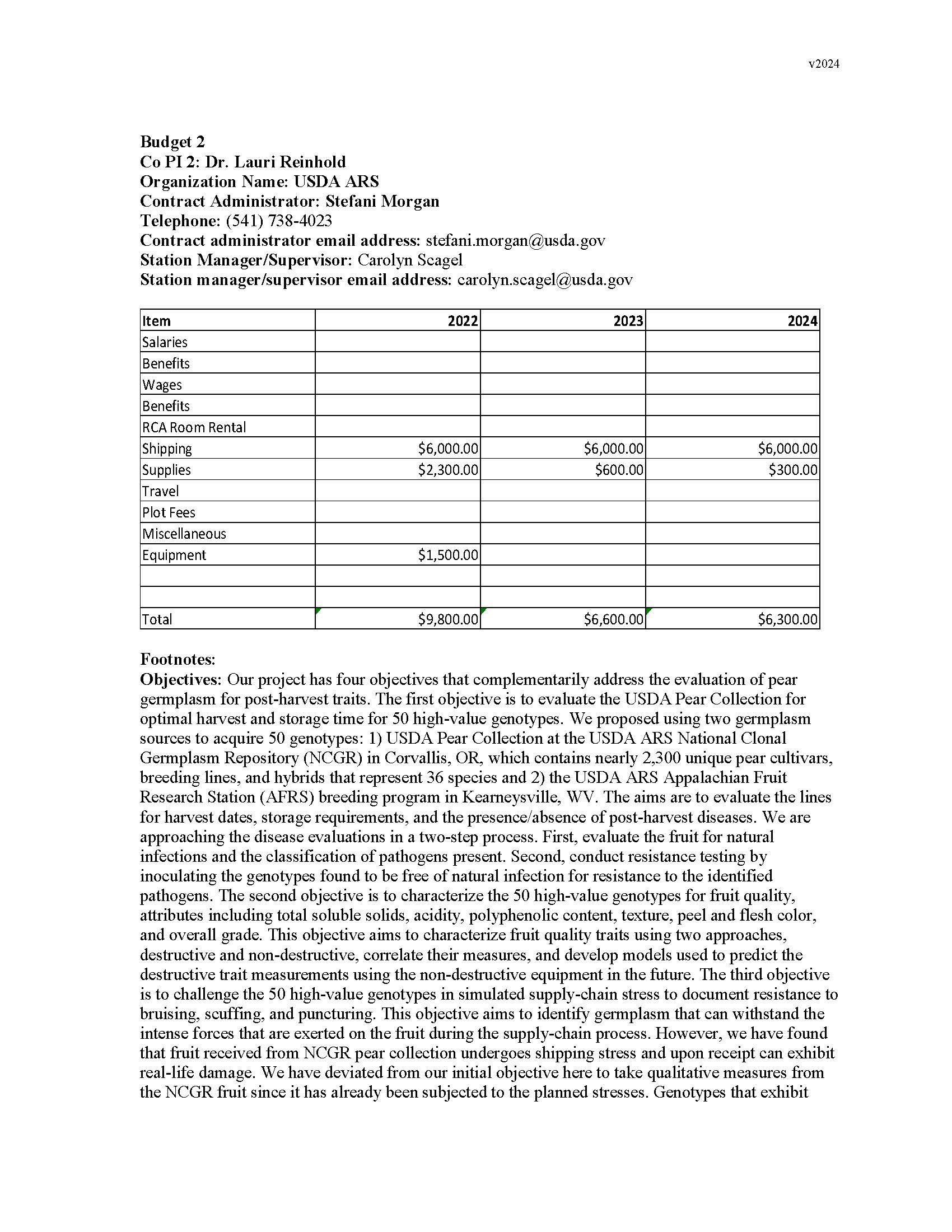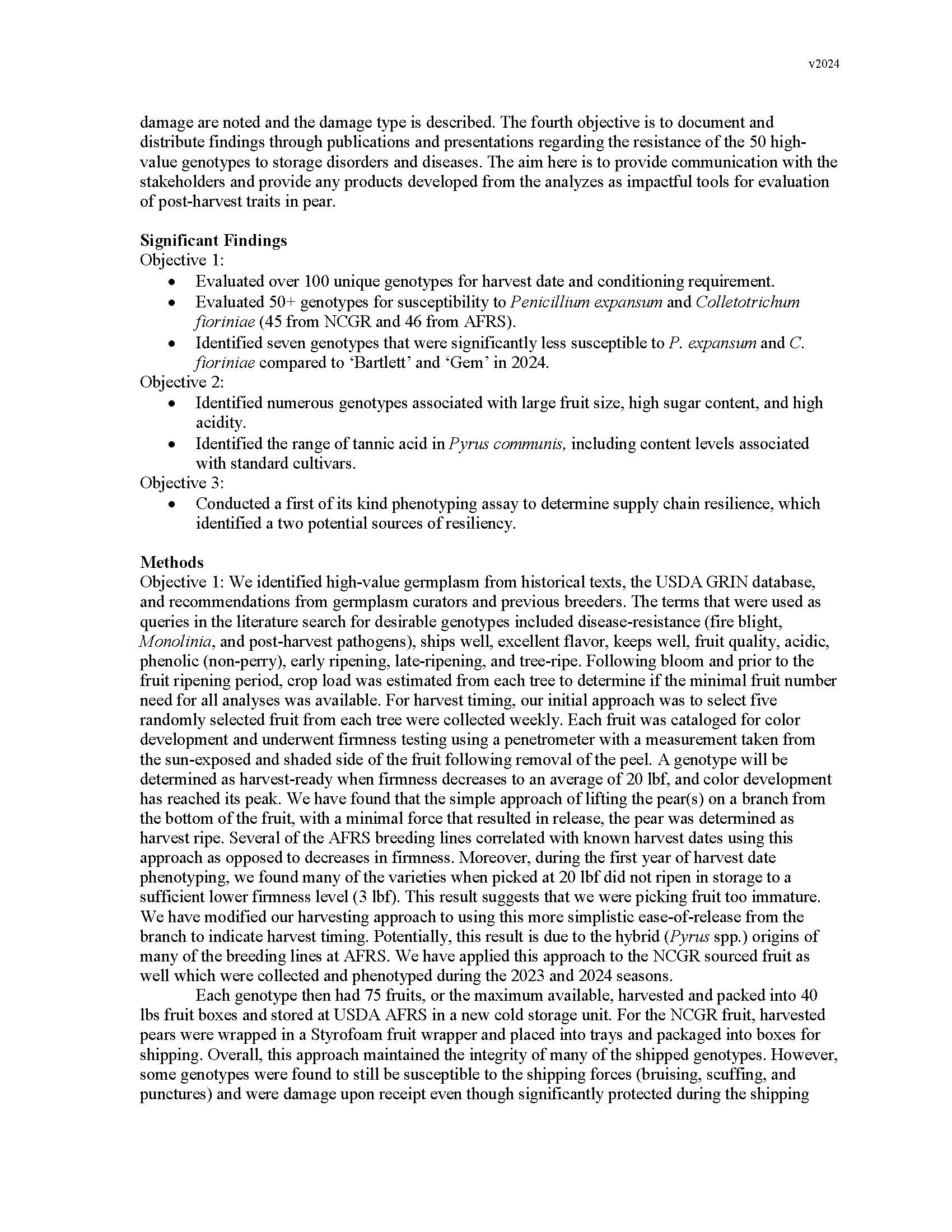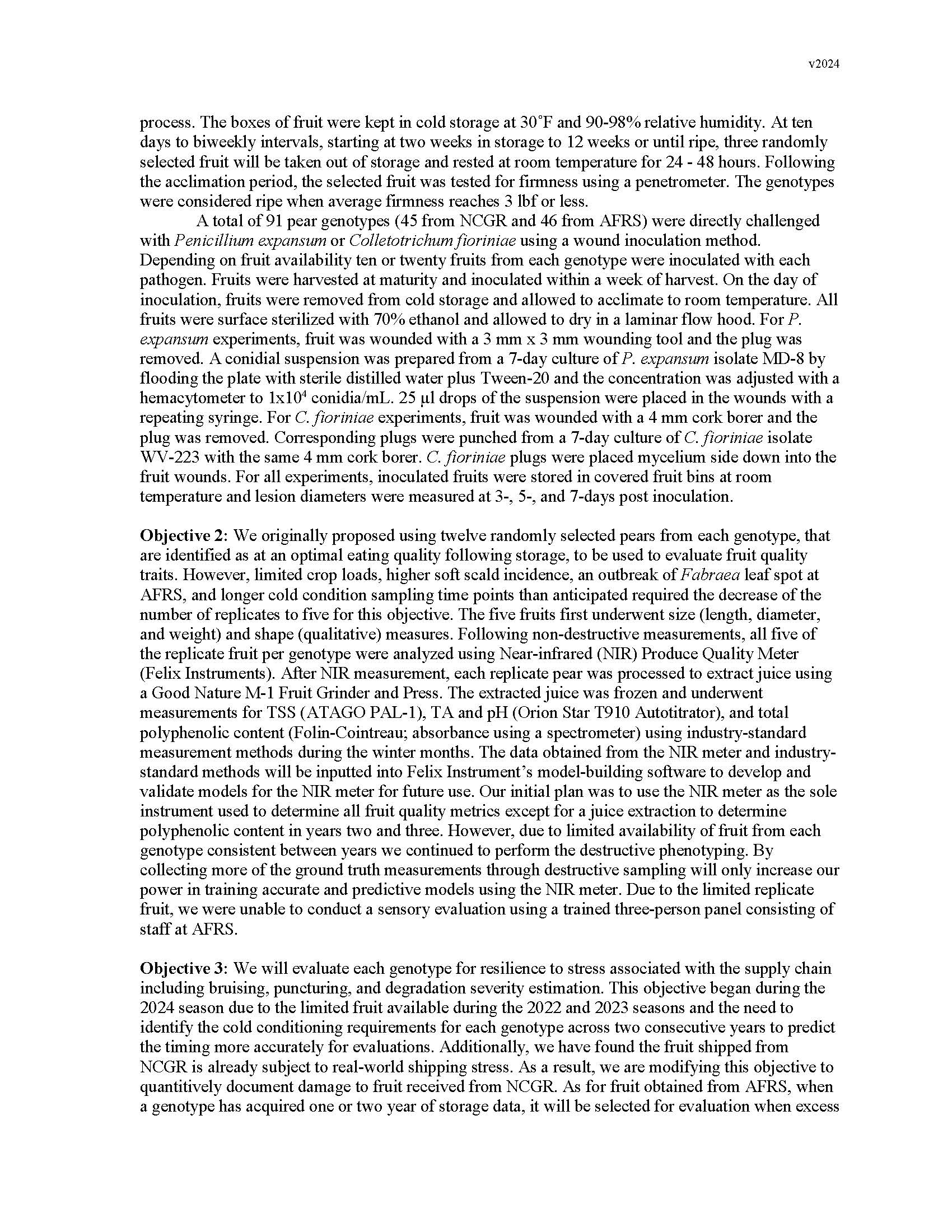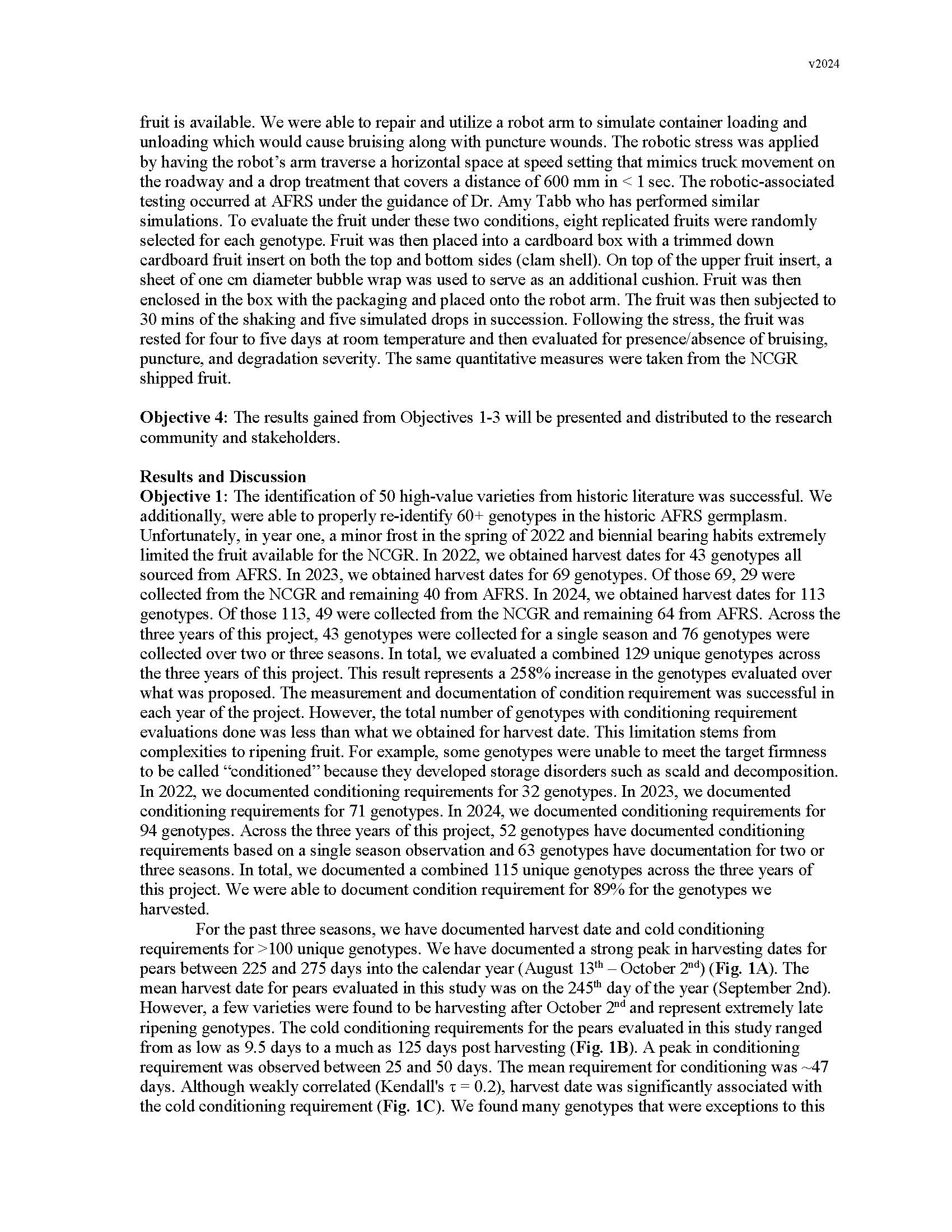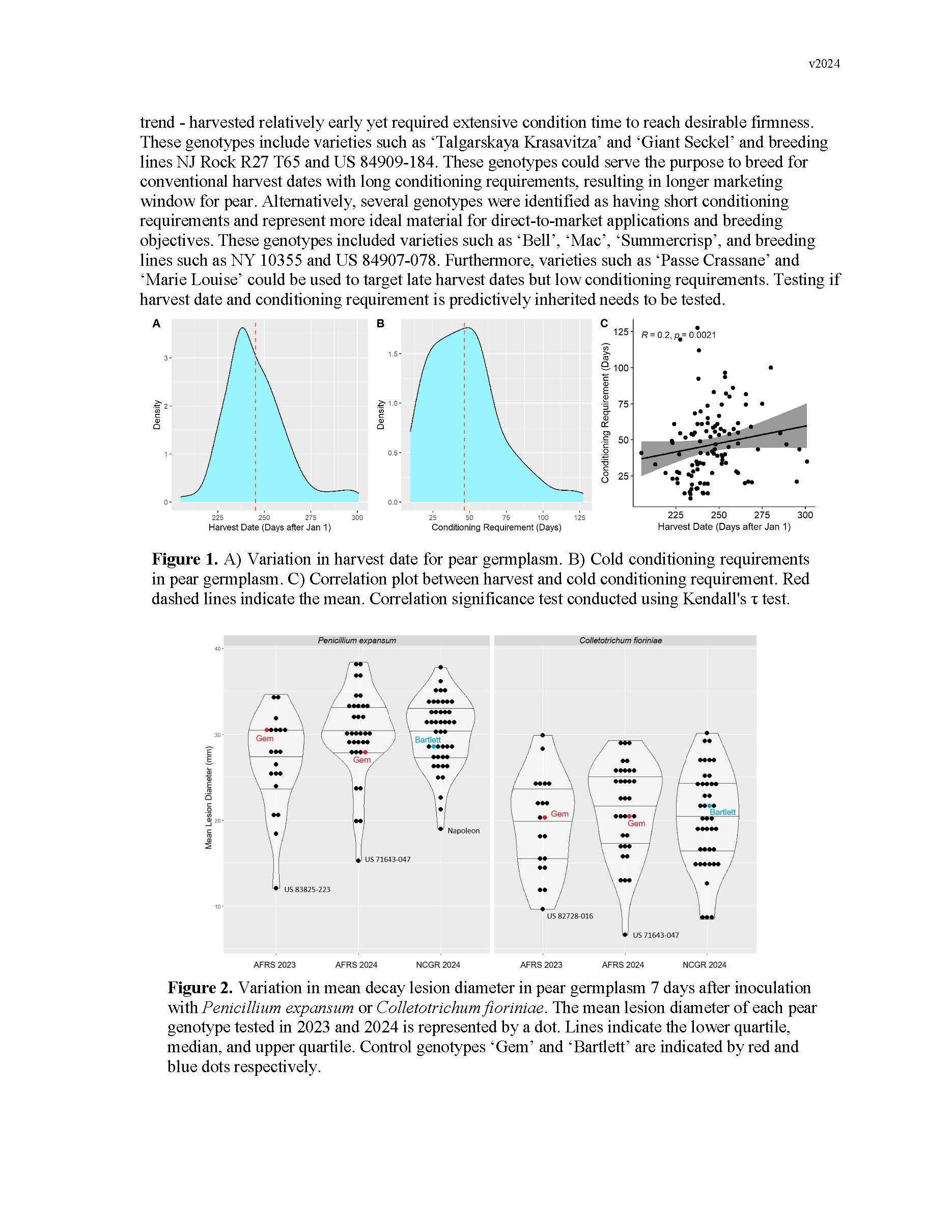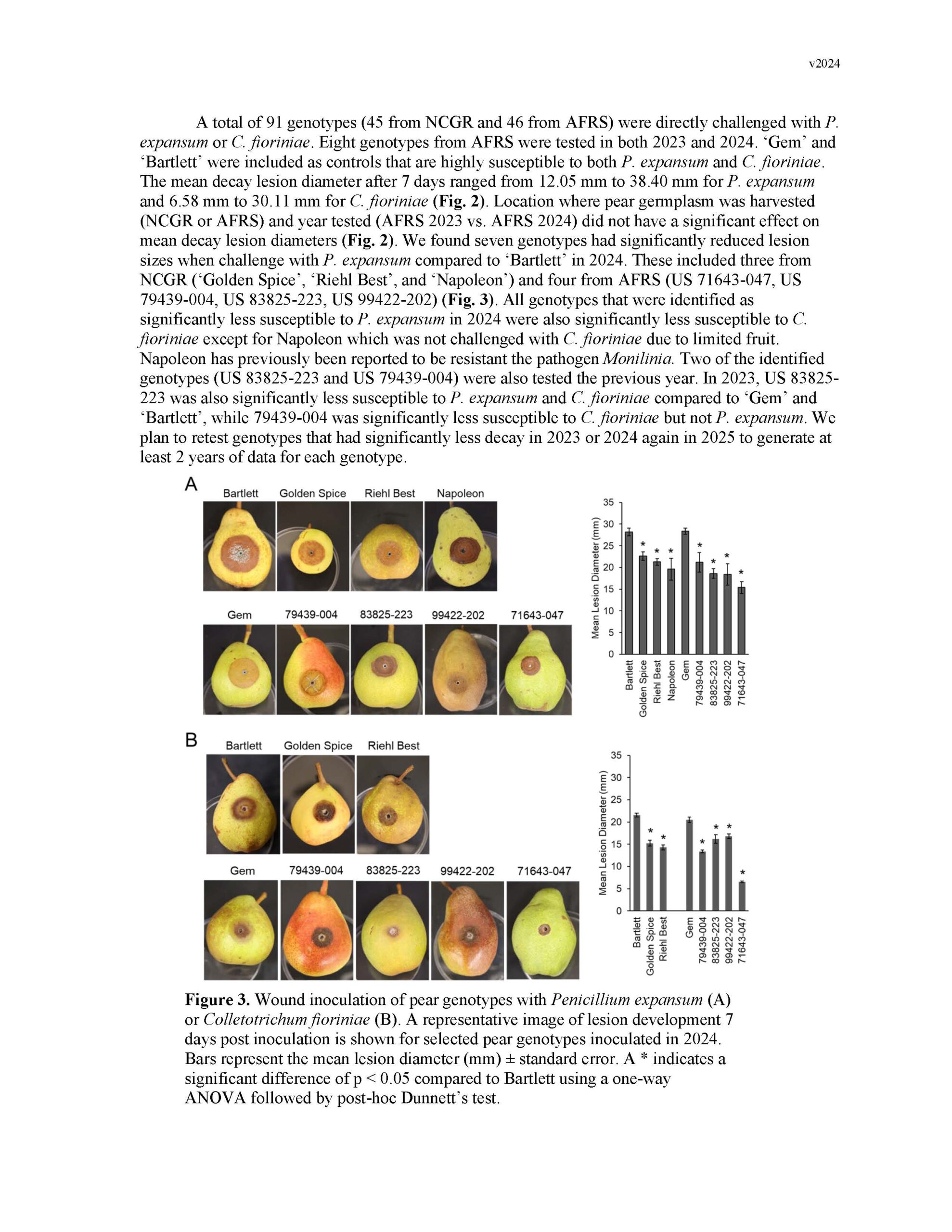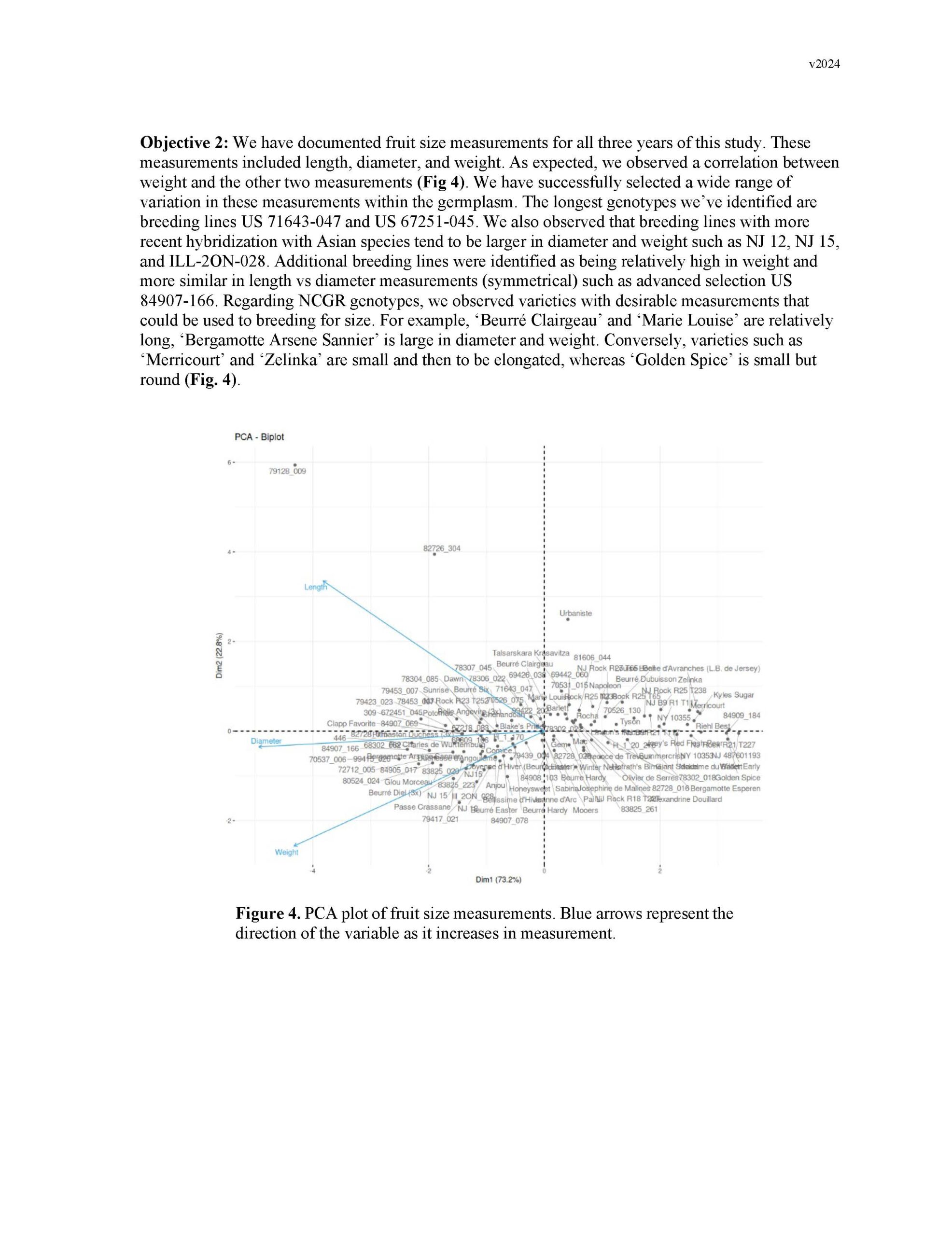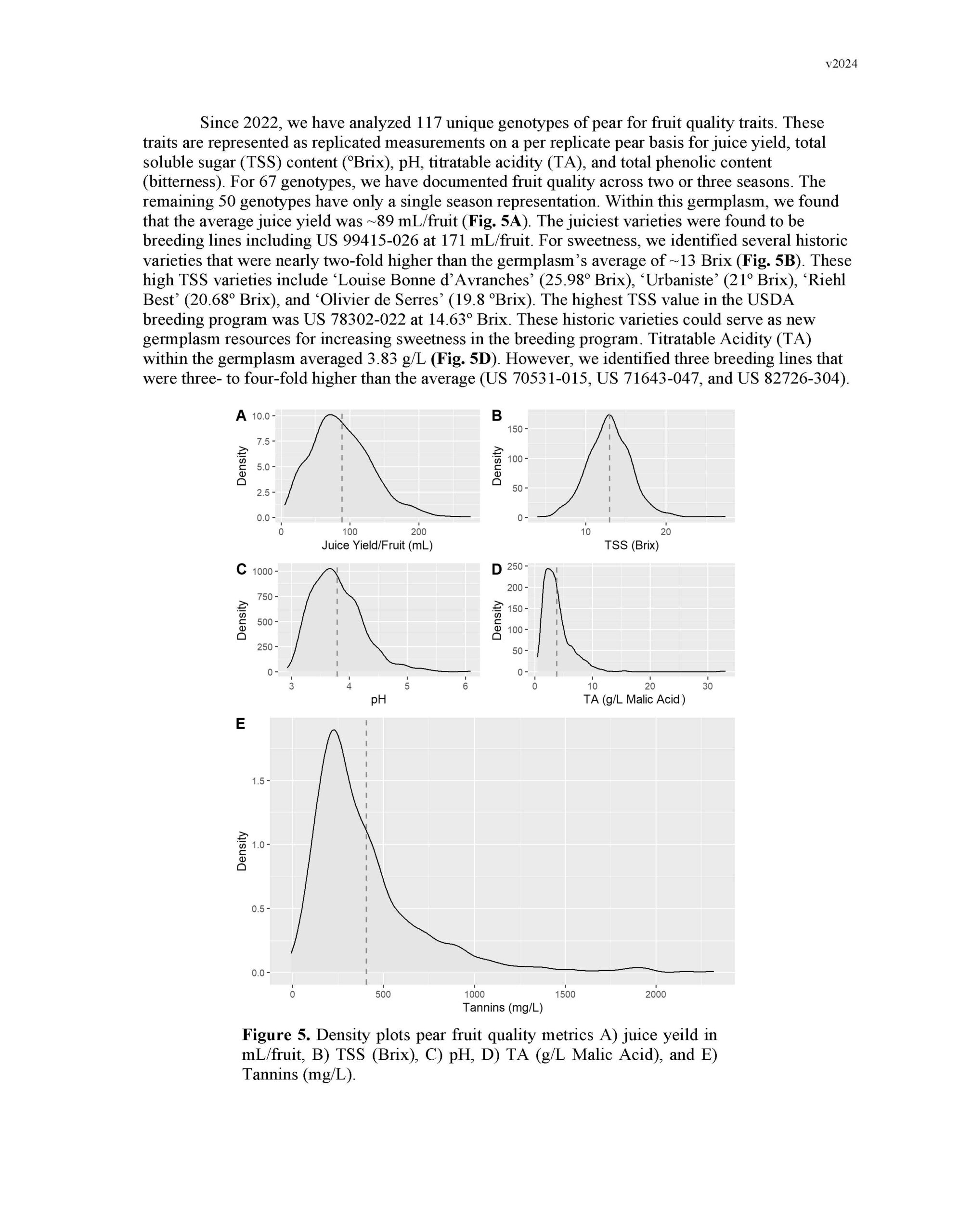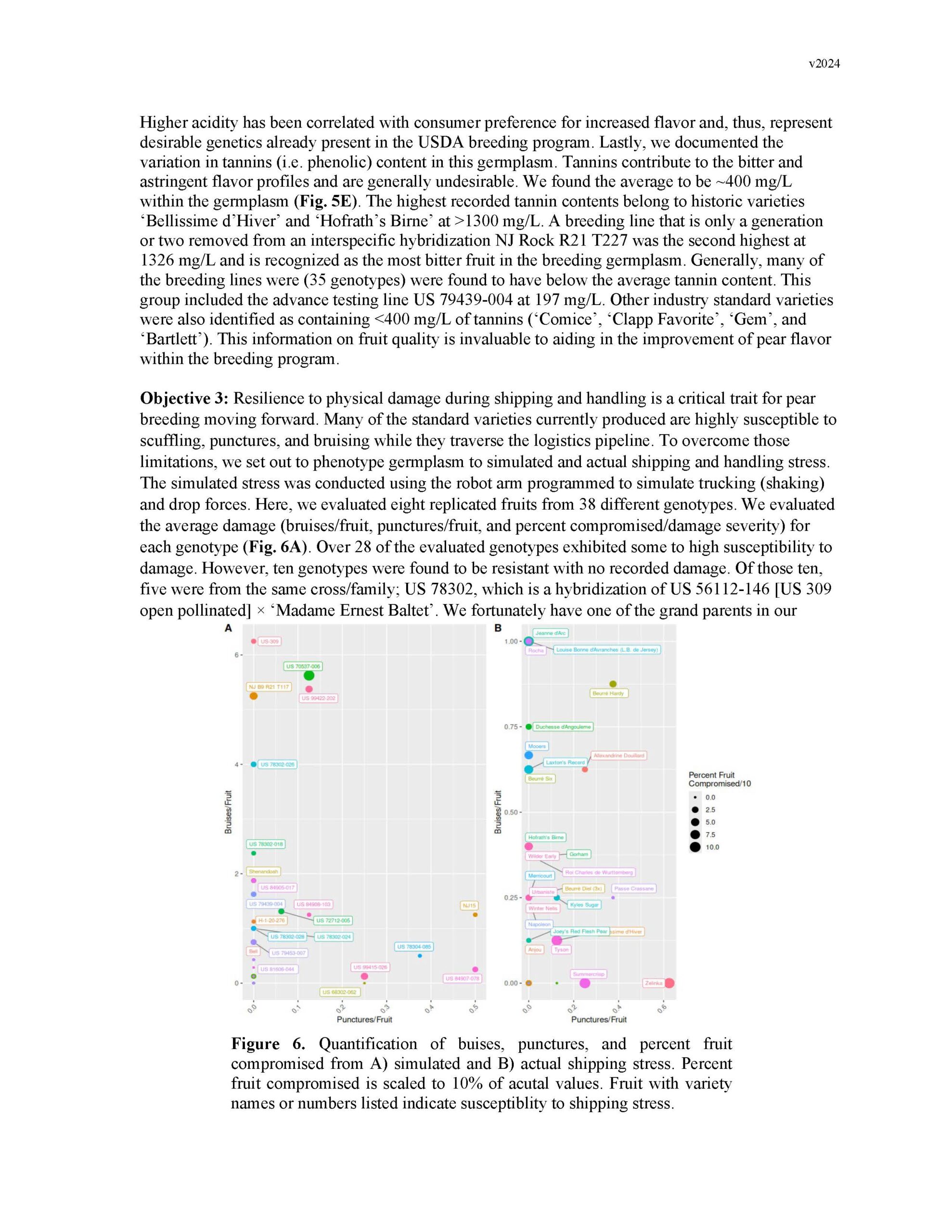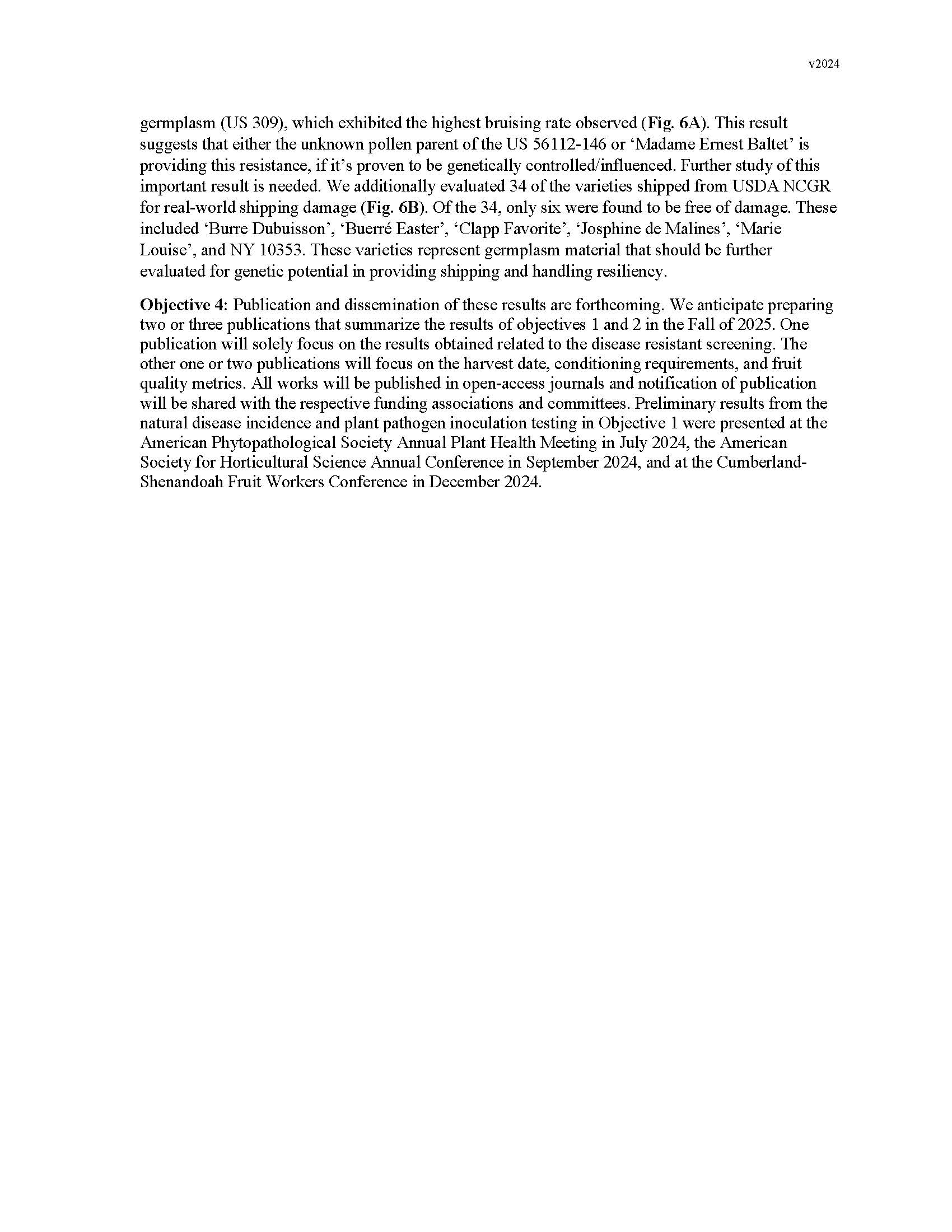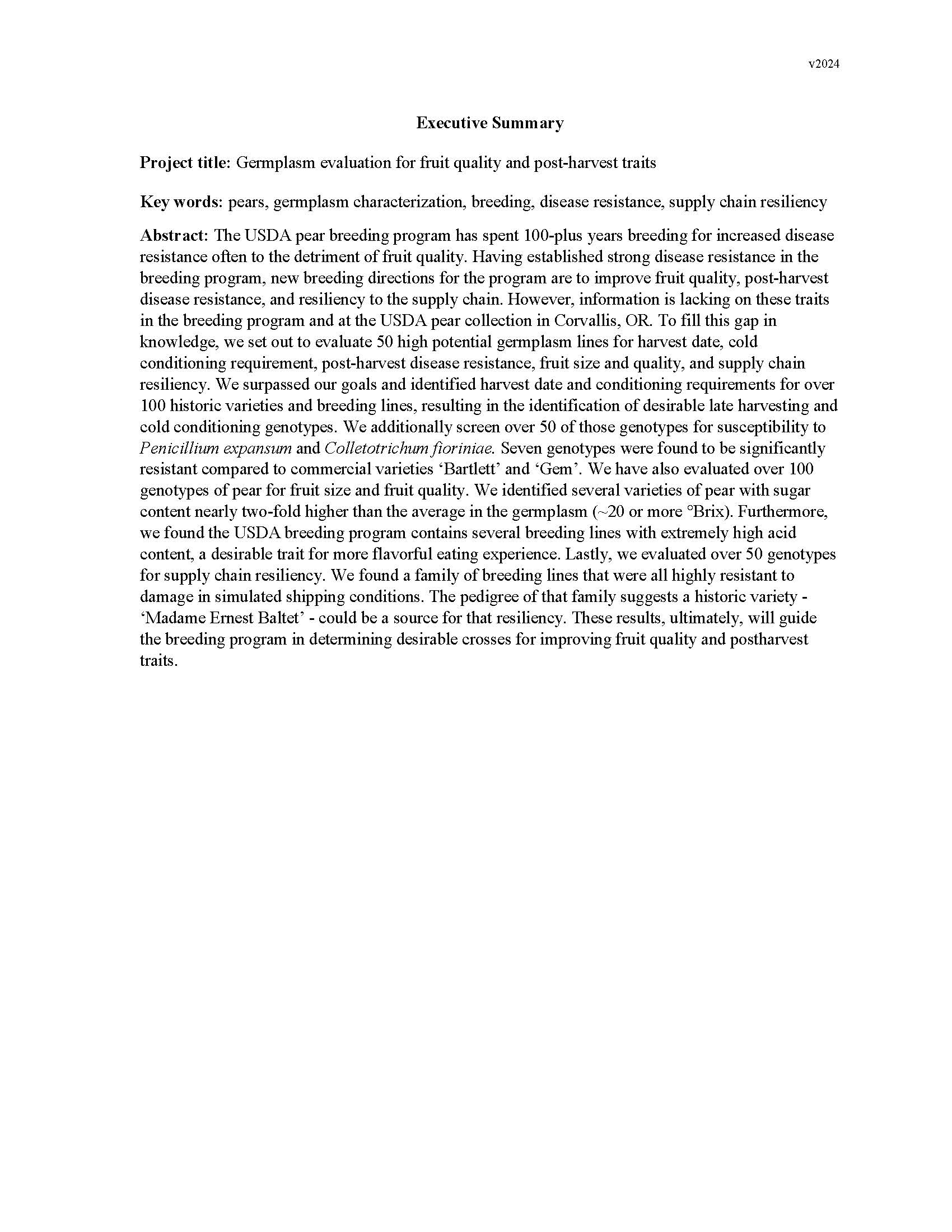Germplasm evaluation for fruit quality and post-harvest traits
Author: Dr. Christopher Gottschalk
Published: 2005
Summary: The USDA pear breeding program has spent 100-plus years breeding for increased disease resistance often to the detriment of fruit quality. Having established strong disease resistance in the breeding program, new breeding directions for the program are to improve fruit quality, post-harvest disease resistance, and resiliency to the supply chain. However, information is lacking on these traits in the breeding program and at the USDA pear collection in Corvallis, OR. To fill this gap in knowledge, we set out to evaluate 50 high potential germplasm lines for harvest date, cold conditioning requirement, post-harvest disease resistance, fruit size and quality, and supply chain resiliency. We surpassed our goals and identified harvest date and conditioning requirements for over 100 historic varieties and breeding lines, resulting in the identification of desirable late harvesting and cold conditioning genotypes. We additionally screen over 50 of those genotypes for susceptibility to Penicillium expansum and Colletotrichum fioriniae. Seven genotypes were found to be significantly resistant compared to commercial varieties ‘Bartlett’ and ‘Gem’. We have also evaluated over 100 genotypes of pear for fruit size and fruit quality. We identified several varieties of pear with sugar content nearly two-fold higher than the average in the germplasm (~20 or more °Brix). Furthermore, we found the USDA breeding program contains several breeding lines with extremely high acid content, a desirable trait for more flavorful eating experience. Lastly, we evaluated over 50 genotypes for supply chain resiliency. We found a family of breeding lines that were all highly resistant to damage in simulated shipping conditions. The pedigree of that family suggests a historic variety - ‘Madame Ernest Baltet’ - could be a source for that resiliency. These results, ultimately, will guide the breeding program in determining desirable crosses for improving fruit quality and postharvest traits.
Keywords:

